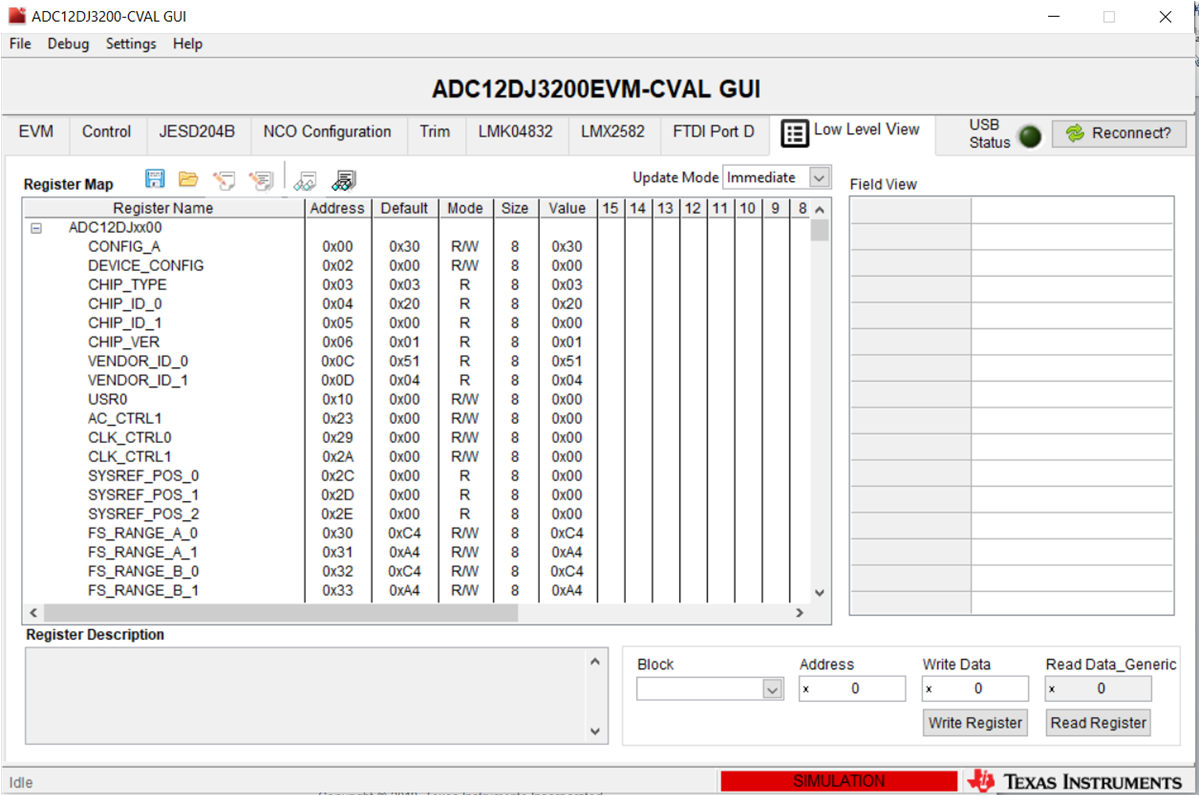TIDUEY8 March 2023
- Description
- Resources
- Features
- Applications
- 5
- 1System Description
-
2System Overview
- 2.1 Design Block Diagram
- 2.2 Highlighted Products
- 2.3
Design Steps
- 2.3.1 Multiple JESD204B Synchronization Requirements
- 2.3.2 Clock Tree Design
- 2.3.3 Power Management
- 3Getting Started Hardware and Software
- 4Testing and Results
- 5Design and Documentation Support
- 6About the Authors
3.2.3 ADC12DJ3200CVAL EVM Programming Sequence
Download the ADC12DJ3200EVM-CVAL GUI from TI.com to program the ADC12DJ3200EVMCVAL. The ADC12DJ3200-SP and LMK04832-SP are devices configured for SNR measurement in the ADC12DJ3200EVMCVAL, as shown in Figure 3-6. The LMK04832 is programmed in distribution mode for the CLKin1 drive to configure SYSREF directly. The ADC12DJ3200EVMCVAL is put into JMODE3 mode to use in dual-channel mode at full Nyquist zone of the device. The EVM is setup in external clock source selection mode, with a sampling frequency of 3200 MSPS and load configuration files in the low level view page of the ADC12DJ3200EVM-CVAL.
Obtain the updated ADC12DJ3200EVM-CVAL configuration files for ADC12DJ3200EVM-CVAL synchronization measurement from the HSDC TIDA01019x GUI software folder.
C:\Program Files (x86)\Texas Instruments\HSDC TIDA01019x GUI\Configuration Files\ ADC12DJ3200EVM-CVAL GUI filesUse the following programming sequence for ADC EVM configuration after the clocking board program:
- Load ADCEVM_LMK04832_CLKin1_SYSREF_bypass.cfg
- Load ADC12DJxx00_JMODE3_SRC_EN.cfg
- Load LMK_LMX_SYSREF_OFF.cfg in HSDC TIDA01019x GUI
- Load ADC12DJxx00_JMODE3_SRC_clear.cfg
 Figure 3-6 ADC12DJ3200 EVM
Programming
Figure 3-6 ADC12DJ3200 EVM
Programming